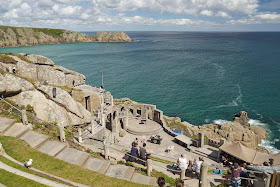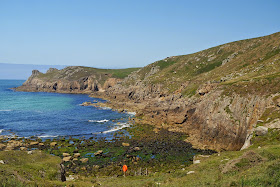A Marbled White, today's signature butterfly
A walk in a remarkably rural part of Gloucestershire with my friend Mervyn. We set out from Jackbarrow Farm, a mile or so west of Duntisbourne Abbots and headed across fields to enter the aptly named Thick Wood. We descended the side of a valley through the wood and reached the bottom, crossing the tiny river Frome, climbing up across more fields to reach the hamlet of Edgeworth at the pretty churchyard of St Mary's church.
The church is of Saxon origin, with Norman and later elements culminating in the almost obligatory Victorian restoration. Next to the church stands the impressive Manor.
It was built about 1700, but the lovely main facade with its Tudor windows and renaissance entrance dates only from 1899.
We headed east past some houses and then across what might have once been - or maybe still is - the park of the Manor House.
This eventually brought us to a quiet, isolated north-south valley, with the Holy Brook running at the bottom. A number of Marbled White butterflies were immediately in evidence.
We headed towards the tiny hamlet of Througham Slad and realised we were in pheasant shooting country. I remember reading that some remarkable number of pheasants are bred for shooting. The charity Animal Aid says that the figure is 35m and that 16m of these are shot, while the others die of other causes such as predation.
Just after we left Througham Slad we turned right (north east) and headed across fields to reach another hillside. I noticed a profusion of butterflies around a number of thistle plants and quickly spotted many Marbled White, Meadow Brown, Ringlet, Gatekeeper, Small and Large Skipper jostling for position. Some flower heads had three or four butterflies on them.
I got a shot of the very attractive underside of the wings of a female Marbled White.
A nice Meadow Brown.
And a Ringlet, really highlighting where the name comes from.
Once I could drag myself away from my efforts to photographs the butterflies we descended the hillside and climbed up the other side - this was the view back.
A few more fields and another traverse of Thick Wood brought us back to where we started.
Conditions: not as sunny as forecast: often cloudy with the threat of rain.
Distance: about 6 miles.
Map: Explorer 179 (Gloucester, Cheltenham & Stroud).
Rating: four stars. Lovely, quiet countryside and a good workout climbing up and down the many hills.
























































